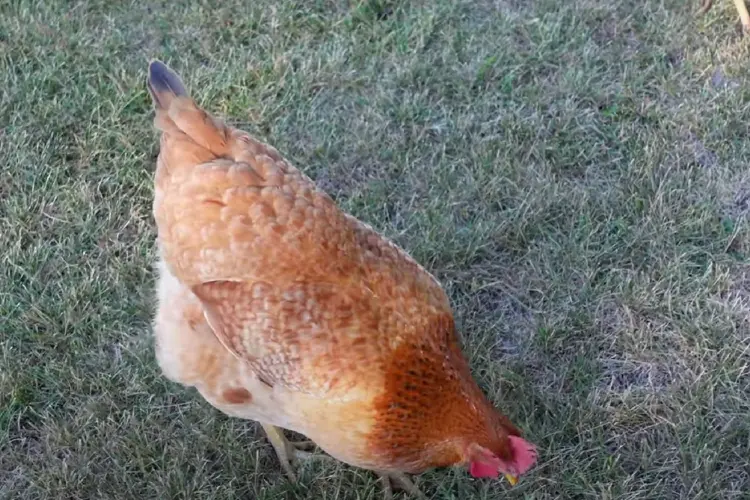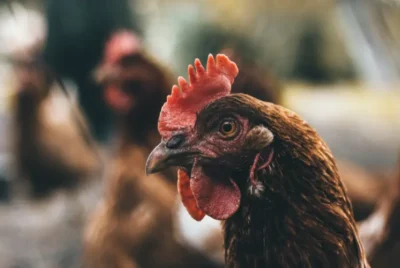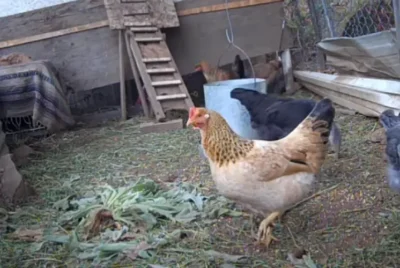Calico Princess Chicken: Guide to Raising and Caring

Raising Calico Princess Chicken can be fun, but it’s often harder than it looks. Many farmers want to enjoy these beautiful birds but get lost and frustrated. They don’t know what food to give them, how to keep them safe, or how to make them happy. Some common chicken tips just don’t work with this special breed.
Thus, we made this guide to give you information about this breed, so you do not have to worry or guess anymore.
Table of Contents
- Quick Overview of Calico Princess Chicken
- Origin and History of Calico Princess Chicken
- Physical Appearance
- Temperament of Calico Princess Chicken
- Guide to Raising and Caring Calico Princess Chicken
- Calico Princess Chicken Egg Color and Production
- Calico Princess Chick Appearance
- Frequently Asked Questions
- Conclusion
Quick Overview of Calico Princess Chicken
- Origin: Hails from the Czech Republic
- Colors: Exhibits shades of red, orange, and white
- Weight: Typically weighs 5 to 7 Pounds
- Temperament: Displays a friendly and docile nature
- Annual Egg Count: Produces around 290 to 300 eggs each year
- Egg Hue: Yields eggs in a brown shade
- Comb Type: Features a single comb structure
- Broodiness Tendency: Shows a high inclination towards brooding
- Egg Dimensions: Lays Large-sized eggs
- Resilience to Temperature: Proves to be heat and cold Hardy
- Lifespan: Lives for about 6 to 8 Years
- Suitable for Beginners: Considered beginner friendly
- Price Range: Typically priced at $4 to $5
Origin and History of Calico Princess Chicken
The origin and history of Calico Princess Chickens have some variations in their accounts. Primarily, this breed is believed to have been developed in the Czech Republic through a hybridization process. It is reported that a Red Barred rooster was crossed with a Columbian hen, resulting in color-sexable chicks with distinct calico plumage.
However, there is also another narrative that suggests the Calico Princess Chicken originated in the early 2000s in the state of Iowa, USA. This version states that a farmer in Iowa undertook crossbreeding efforts involving Leghorn, Rhode Island Red, Plymouth Rock, and Wyandotte chicken breeds to create the Calico Princess Chicken.
Despite these differing origins, the Calico Princess Chicken became a popular egg-laying breed in the United States. While the exact historical details may vary, the unique calico plumage and desirable traits of the breed have contributed to its recognition and appeal among poultry enthusiasts.
Calico Princess Breed
The Calico Princess is a hybrid bird and not officially recognized as a distinct chicken breed by the American Poultry Association. This variety is obtained through crossbreeding. The Calico Princess is a recent addition to chicken breeding, representing a relatively new development in the field.

Physical Appearance
Calico Princess chickens look special. Their feathers are reddish-brown, like a glimmering ‘topaz’ stone, with white and brown stripes that make them shine like orange. Sometimes, there’s a bit of black on their neck and tail feathers. They have red on their heads and yellow legs, and they look neat. They can vary a little because of their family background from Sussex and Rhode Island Red.
The hens are around 5-6 pounds, and the roosters are about 7 pounds. Their feathers can be white or pale orange, from their neck to their head. Some hens have dark beaks and tails in black or gray. Each chicken has its feather pattern, and when they’re young, their feathers are a soft brown color.
Temperament of Calico Princess Chicken
The Calico Princess Chicken is known for its friendly and calm temperament. These chickens are easygoing and are particularly suitable for beginners. They have a docile nature that matches their vibrant appearance. They get along well with other animals and are great companions for families.
They are large in size so they need a large space or a wider chicken coop, but despite that, they are low-maintenance and enjoy spending time with their owners while exploring their surroundings. These chickens also have good energy levels and are skilled at foraging for food. They have a gentle and approachable demeanor, making them a fantastic choice for those seeking chickens with pleasant temperaments.

Guide to Raising and Caring Calico Princess Chicken
Health Issues and Care
Calico Princess chickens are resilient in both hot and cold conditions. They perform well in chilly winters and maintain egg-laying, but they should have some protection from extreme weather. In terms of health, these birds generally require little concern.
They originate from healthy stock and possess no noteworthy defects, though we suggest routine bird care, including parasite control. Their robust health profile makes them an excellent choice for beginners. They are low-maintenance and provide ample eggs for your family while being delightful backyard companions.
Feeding Requirements
Calico Princess Chickens thrive on a balanced diet comprising grains like wheat, barley, corn, and millet seeds, as well as veggies like lettuce and carrots. Protein sources such as mealworms and essential nutrients from chicken grits or oyster shell supplements are also beneficial. To care Calico Princess chicken, monitor their intake as they tend to overeat. Proper nutrition and care will result in a thriving and contented flock.

Calico Princess Chicken Egg Color and Production
These chickens typically lay eggs with brown-colored shells. Their egg production is remarkable, often exceeding 300 eggs per year. These eggs are larger, weighing around 2.1 ounces (62 grams). T
These chickens are hardy in various temperatures and continue laying eggs even during the winter months, although the rate might slow down a bit. Calico Princess hens tend to go broody, showcasing their nurturing side as excellent mothers. However, if you’re not aiming to hatch eggs, it’s important to note that egg production temporarily stops during broodiness.
Despite being great egg layers in the early years, Calico Princess chickens typically experience a significant decline in egg production after only two to three years. Their lifespan is shorter than hybrid breeds, with many not living beyond four years.
Calico Princess Chick Appearance
When Calico Princess Chicken chicks hatch, they usually have a fuzzy and downy covering in shades of light brown or tan. Calico Princesses are known as color-sexing breeds, which means you can tell if they’re male or female by looking at their feathers when they’re born.
Female chicks tend to have reddish-brown down, while males are generally white. This color difference makes it easier to distinguish between male and female chicks from an early age. This helps farmer who works with chickens know their genders easily. It’s a method used often in the chicken industry and by hatcheries.
Frequently Asked Questions
Are Calico Princess Chickens Good For Meat Production?
No, Calico Princess Chickens are primarily bred for their egg-laying abilities rather than meat production.
When Do Calico Princess Chickens Start Laying Eggs?
Calico Princess chickens, like many other chicken breeds, typically start laying eggs between 4 to 6 months of age. However, the exact timing can vary based on factors such as genetics, diet, health, and environmental conditions
Conclusion
Calico Princess Chickens stand out as delightful companions for both beginners and experienced backyard chicken keepers. This guide has taken you on a feathered journey through their captivating traits, from their charming personalities to their eggcellent contributions.
By focusing on their easygoing nature and straightforward care requirements, we’ve hatched a foundation for success in raising these feathered friends. As you embark on your adventure with these chickens remember that patience, care, and a sprinkle of joy will nurture not only their well-being but also a special bond between you and your clucking companions. Happy raising chickens!




